After one day in Quito we were up and at ’em at 6 AM and on the road by 7, heading toward Sachatamia Lodge in the heart of Mindo Valley, our home for the next three days.
Below is a shot of the countryside during our drive, with mist still covering the valley at 7 in the morning.
About an hour out of Quito we arrived at Reserva Yanacocha which sits on the western slope of the Volcano Pichincha at an elevation of 10,500 feet. We spent most of the morning at a relatively small feeder station; a couple of hummingbird feeders, bananas placed on dead limbs, and a birdbath. We stood beneath a lean-to roof just 15 feet away from some of the most colorful birds I’d ever seen! I picked up 25 Lifers on that day alone!
The first bird I recognized at the feeder station was the Rufous-collared Sparrow. This bird is widespread in Central and South America so it was not a Lifer for me and we saw at least one every day of our tour.
The most frequent visitor to the feeder station was the Masked Flowerpiercer. Six of them flew in and out of the brush just behind the birdbath – their bright red eye was unmistakable.
One Glossy Flowerpiercer came in for a drink at the birdbath. Note the long, thin tongue extending into the water.
The Yellow-breasted Brushfinch was a colorful visitor to the feeders. We had seen it the day before in the city park in Quito but here is my first picture of one.
As striking as the Brushfinch was, there were a group of Mountain Tanager species that showed up that were some of the most colorful birds we would see on the trip. The Mountain Tanager, as you might surmise, live at higher elevations so at 10,500 feet this was their prime habitat. Take a look at these showy birds:
Black-chested Mountain Tanager with a bit of banana in its beak. Its grass-green back is what stood out most to me.
Scarlet-bellied Mountain Tanager. Note the patches of blue on the wings and underneath.
Certainly not as colorful as the Mountain Tanagers, but impressive in size, a family of four Andean Guan came through to feed on the bananas.
Hummingbirds are a major attraction for birders in Ecuador; 132 of the 340 known hummingbird species can be found there and we saw seven of them while at Yanacocha . In the interest of length today, instead of including all seven of them here I will share another post later this week featuring those beautiful hummingbirds.
After leaving the feeder station most of us took a 4.5 mile trail out and back – to another set of feeders! This was a bit farther than Karen and I are used to hiking and at that altitude we lagged behind the group. As I previously shared we usually birded at feeder stations because that’s where the birds are. During the course of this hike we saw a couple of species next to the path and a mixed flock of birds high above us. It was frustrating because the viewing opportunities were not good. I did get a shot of a Black Flowerpiercer doing its thing near us.
When we arrived at the end of the trail we found a group of Spectacled Redstarts around the outskirts of the feeder area.
The highlight of the trek was our first look at an Antpitta. These birds remind me of an egg on legs. They are traditionally very shy and walk on the floor of the forest, making them exceedingly difficult to spot in the wild. However it has been discovered that these elusive birds can be lured out with fresh worms. Someone goes out early in the day and digs for the worms and places them in a cup. When a birding group arrives the Antpitta’s “handler” calls out to them and throws some worms on the ground. This technique worked five out of the seven times we were there so we got some good looks at them. Here is our first, an Ecuadorian Antpitta (formally called Rufous Antpitta). Such a cute little thing!
We made it back to the trailhead (about 20 minutes later than everybody else) and found that mist now enveloped the area; since it was lunch time we didn’t miss any more birding. We ate in a room that sat no more than 20 people and were served an excellent meal of vegetable soup, fried perch or chicken, rice and the biggest lima beans I’ve ever seen prepared by two ladies in a small kitchen right next to our tables.
After lunch we hopped back on the bus and headed for our home for the next three nights, Sachatamia Lodge in the Mindo Valley.
Links to previous posts on our Ecuador trip:
How to prepare for and get the most from your bird tour
Our Ecuador Birding Trip – Preliminary Data
Our Bird Tour In Ecuador – Overview
Birding a City Park in Downtown Quito, Ecuador
If you enjoy seeing beautiful pictures of birds from around the world and reading about them Click Here to sign up for our mailing list. Members can post their own GreatBirdPics and learn more about bird photography techniques.
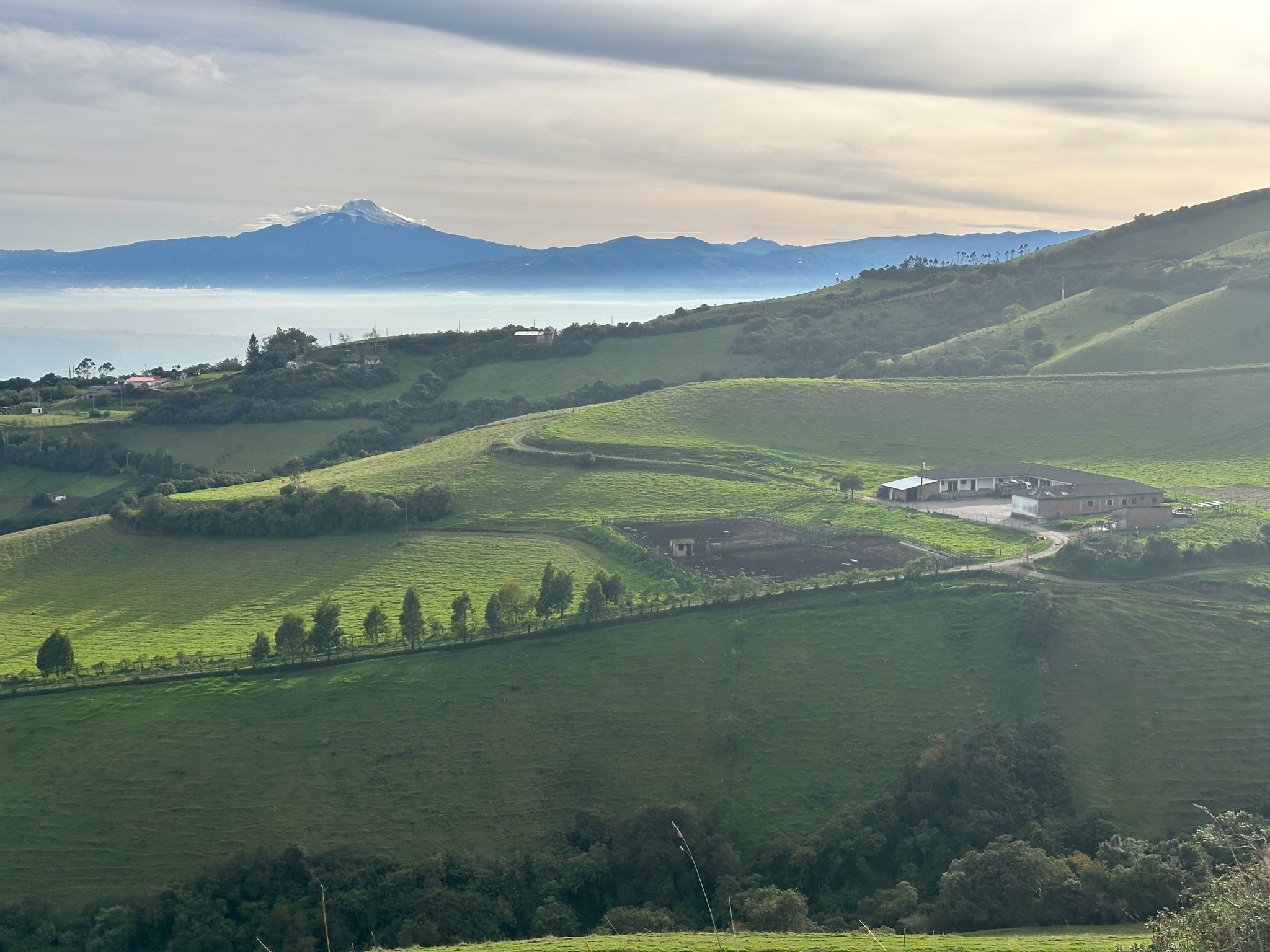
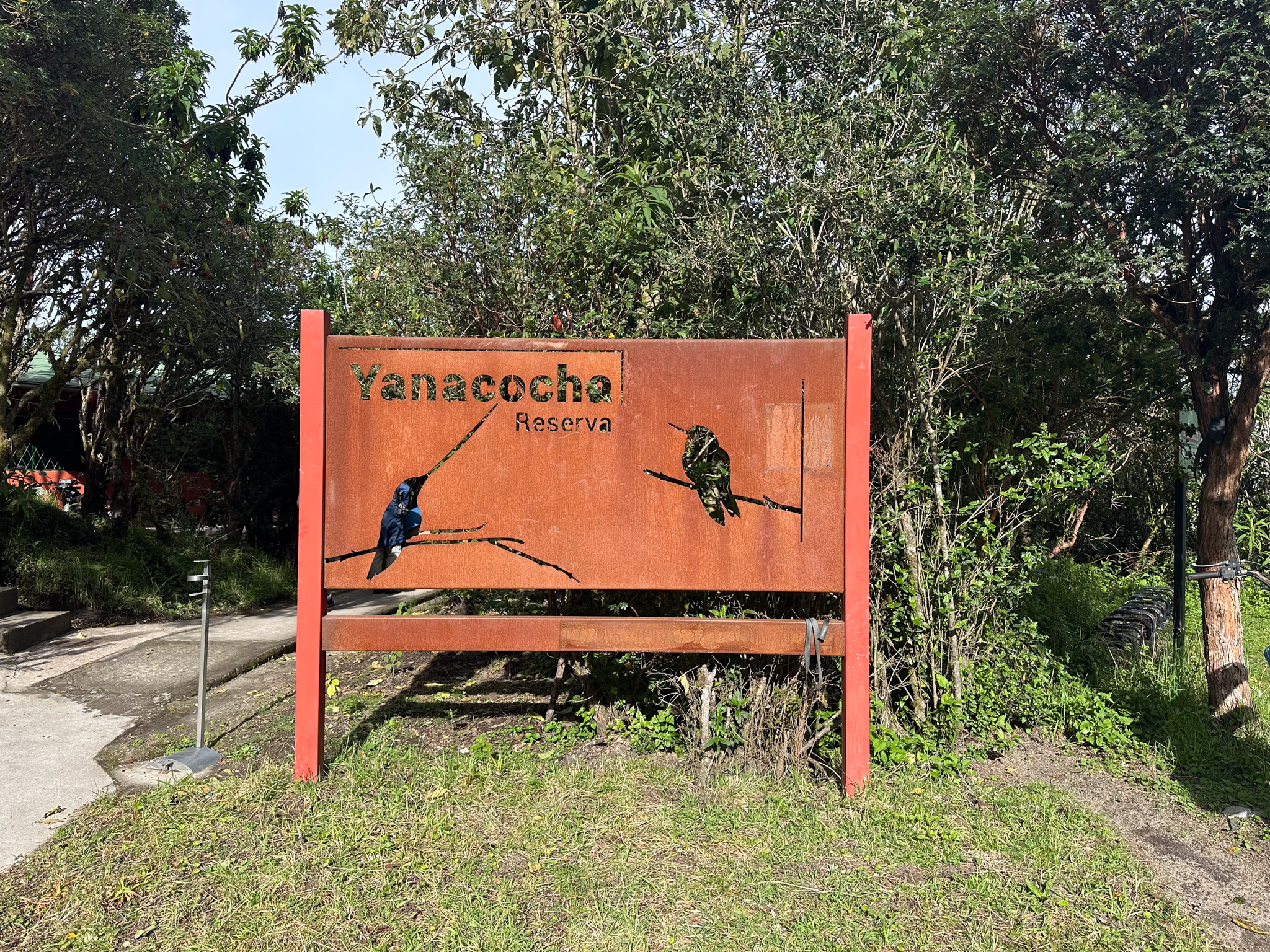
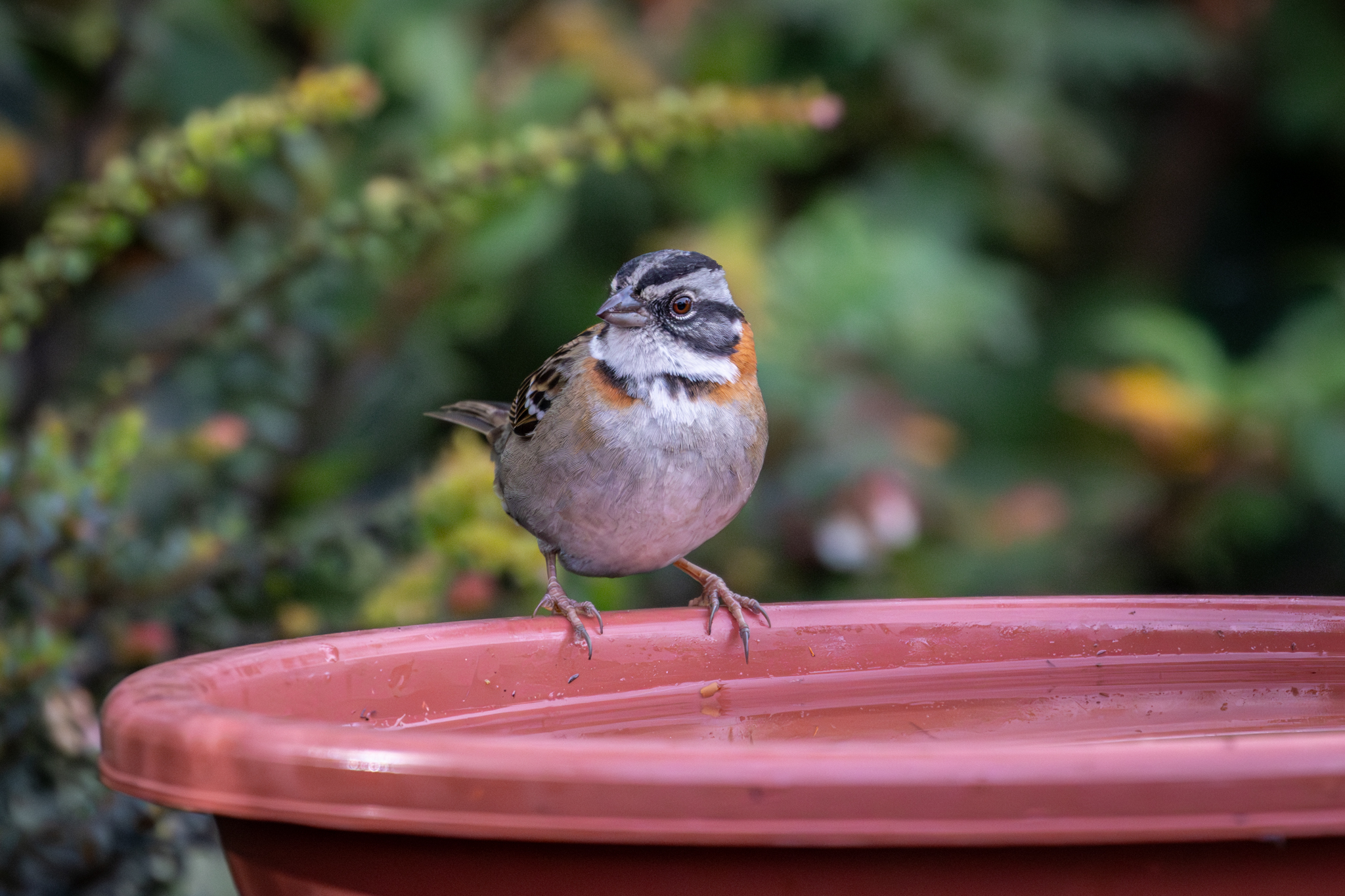
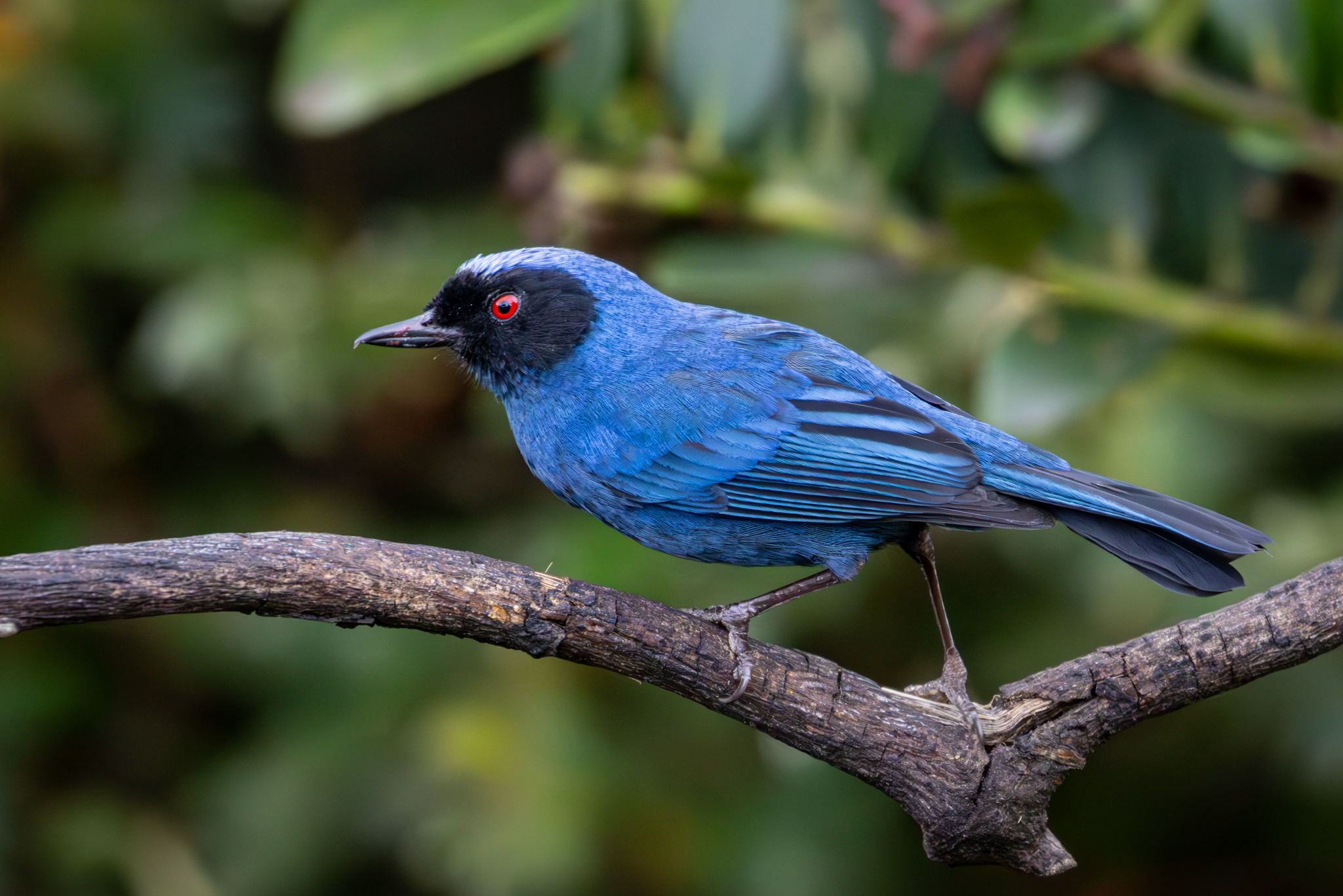
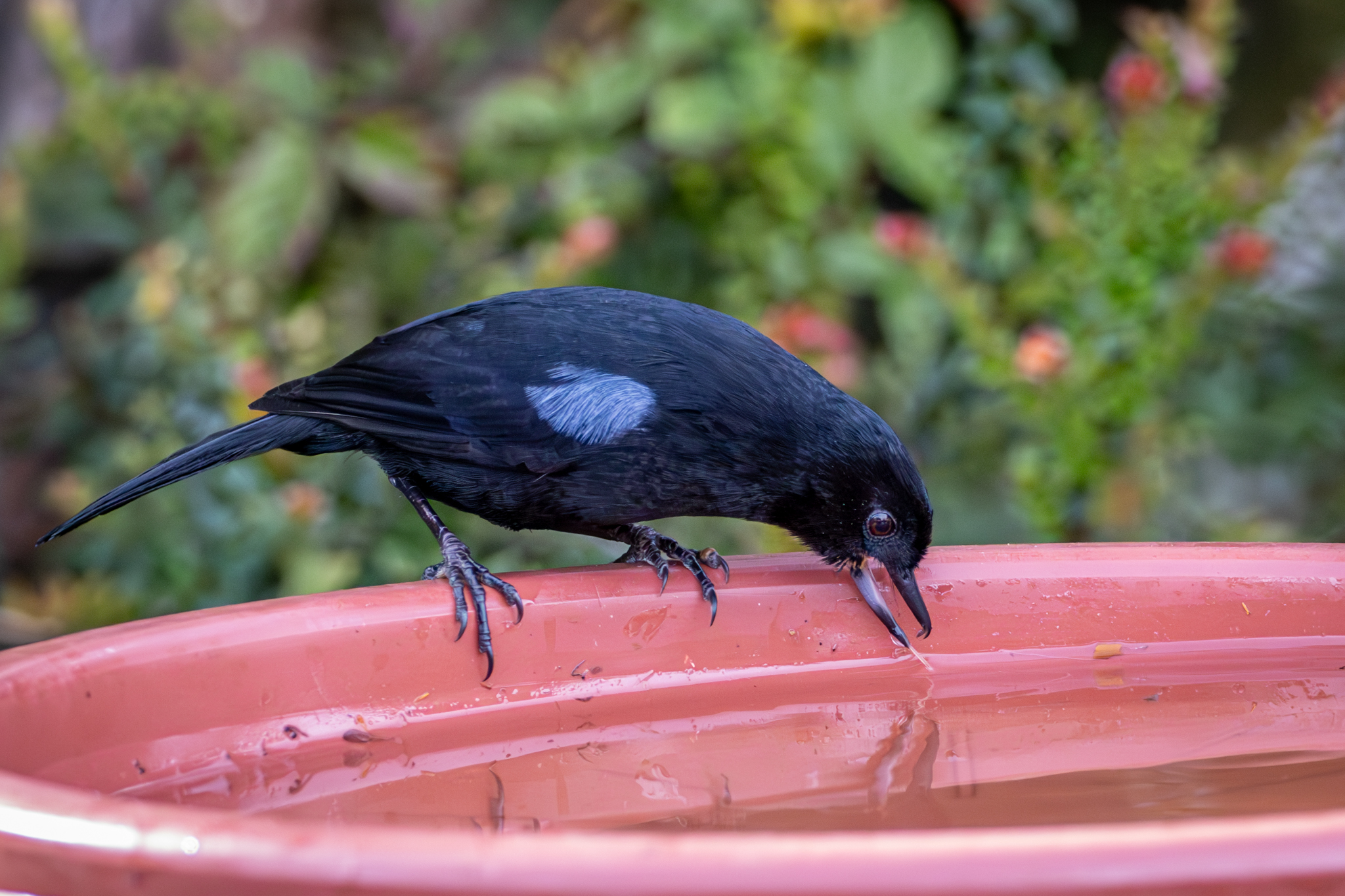
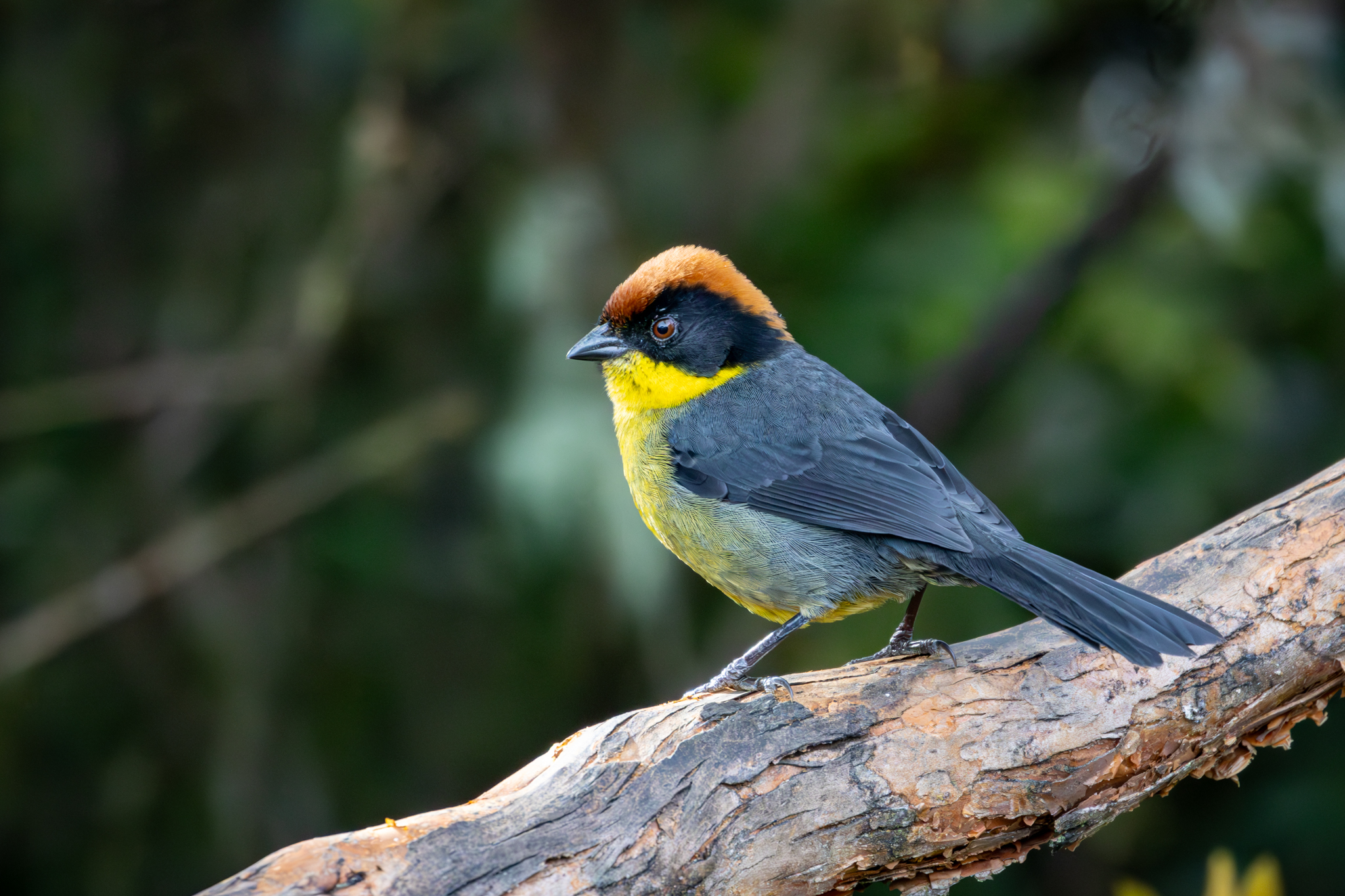
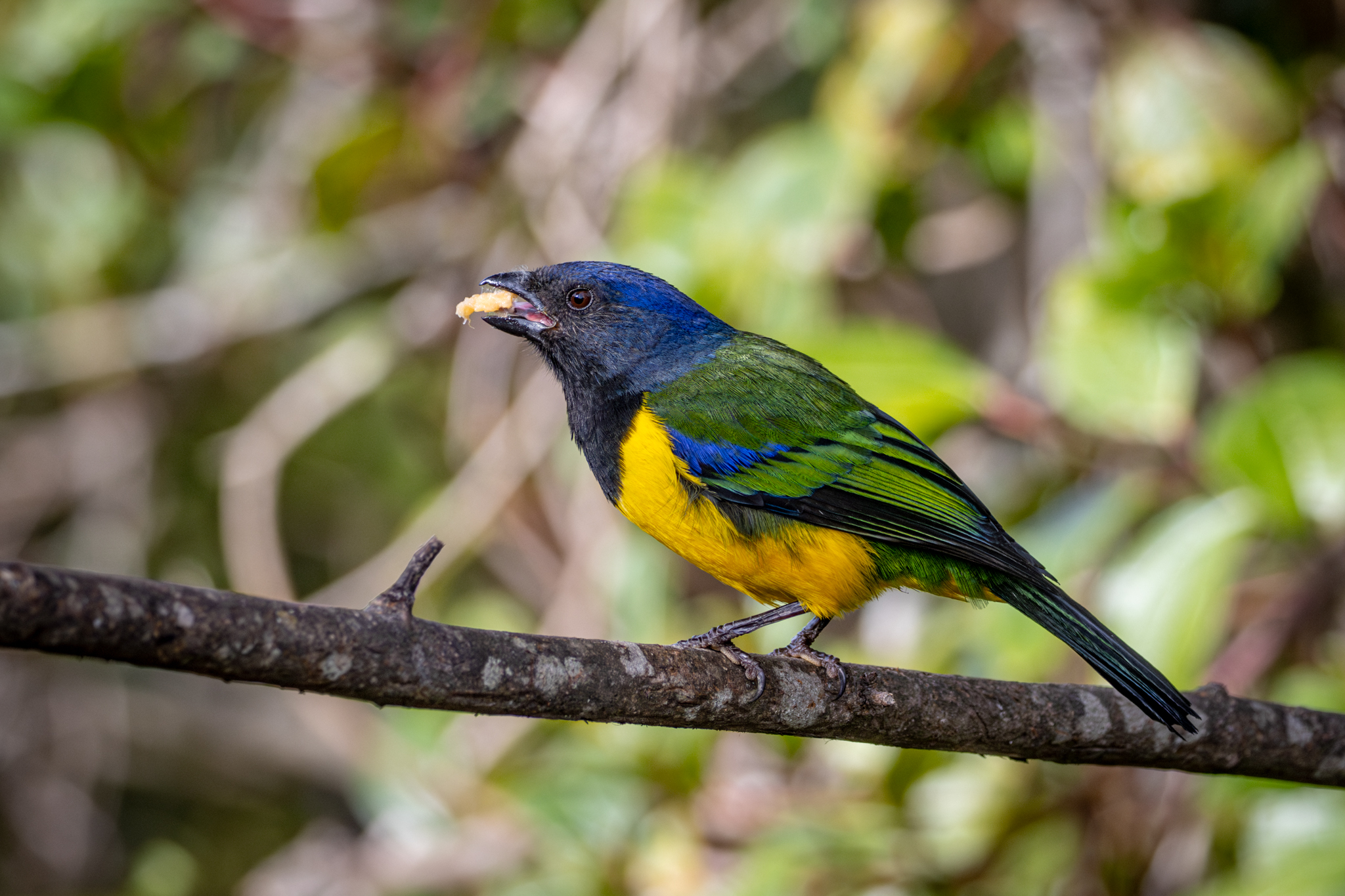
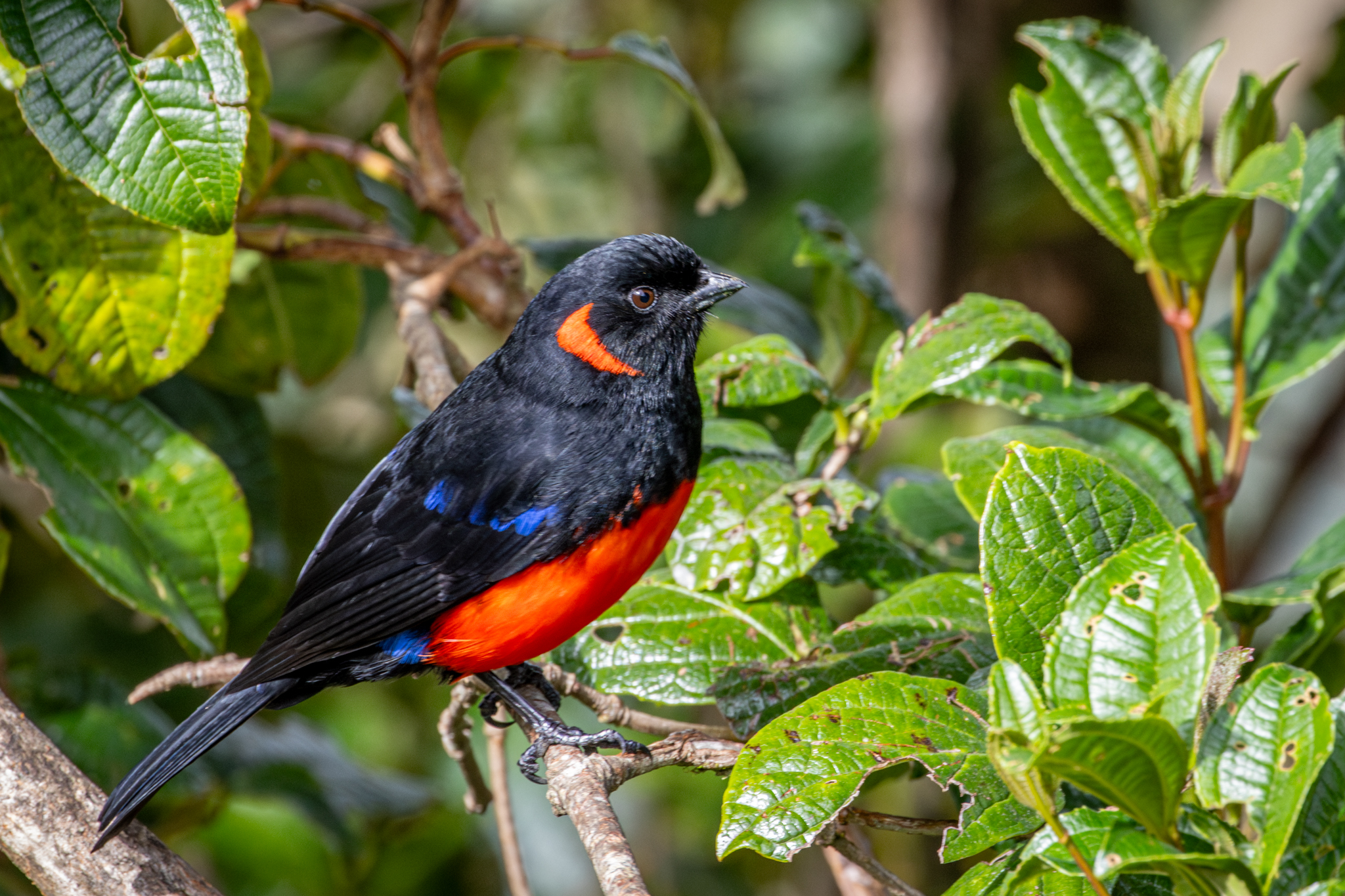
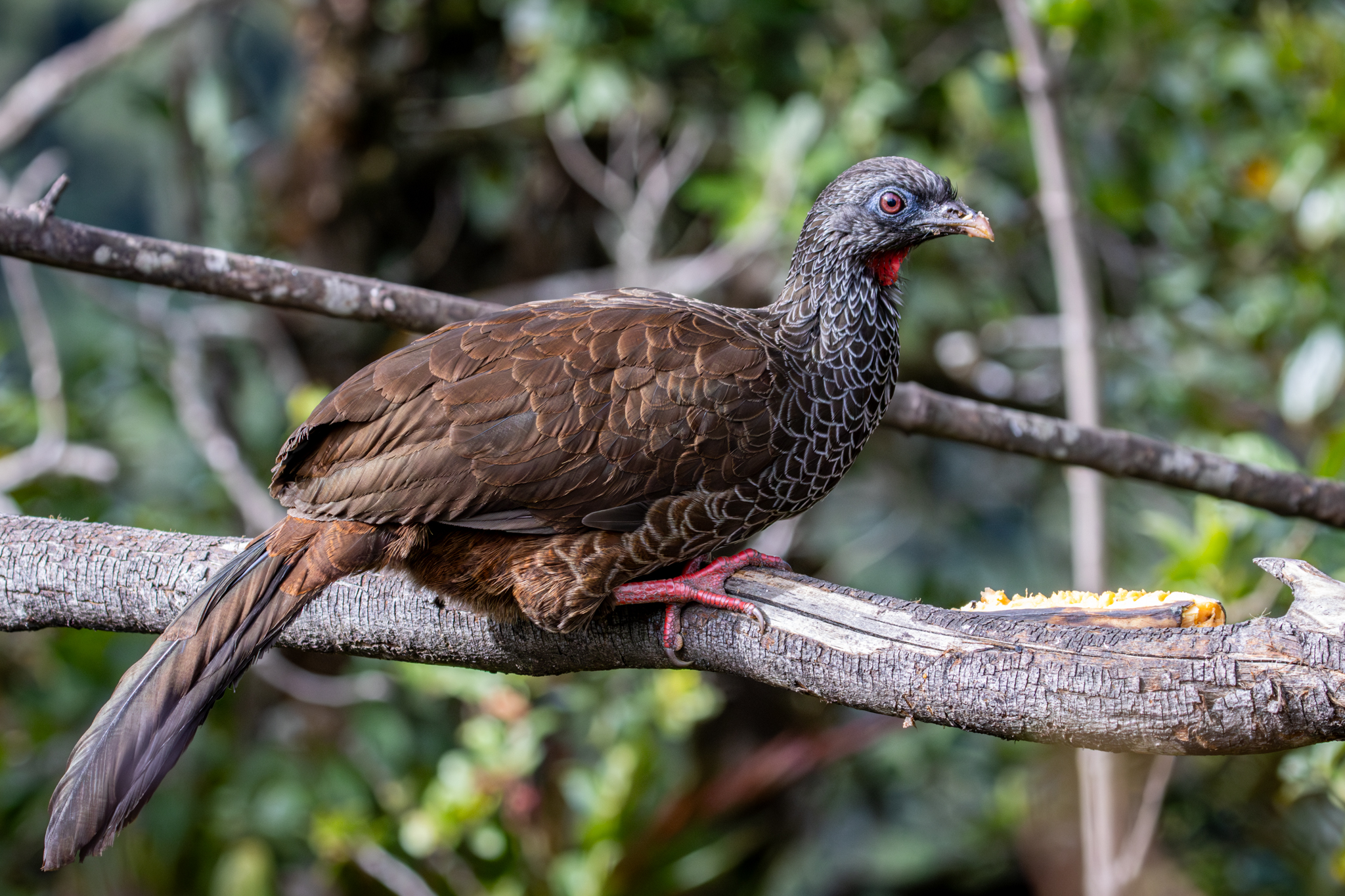
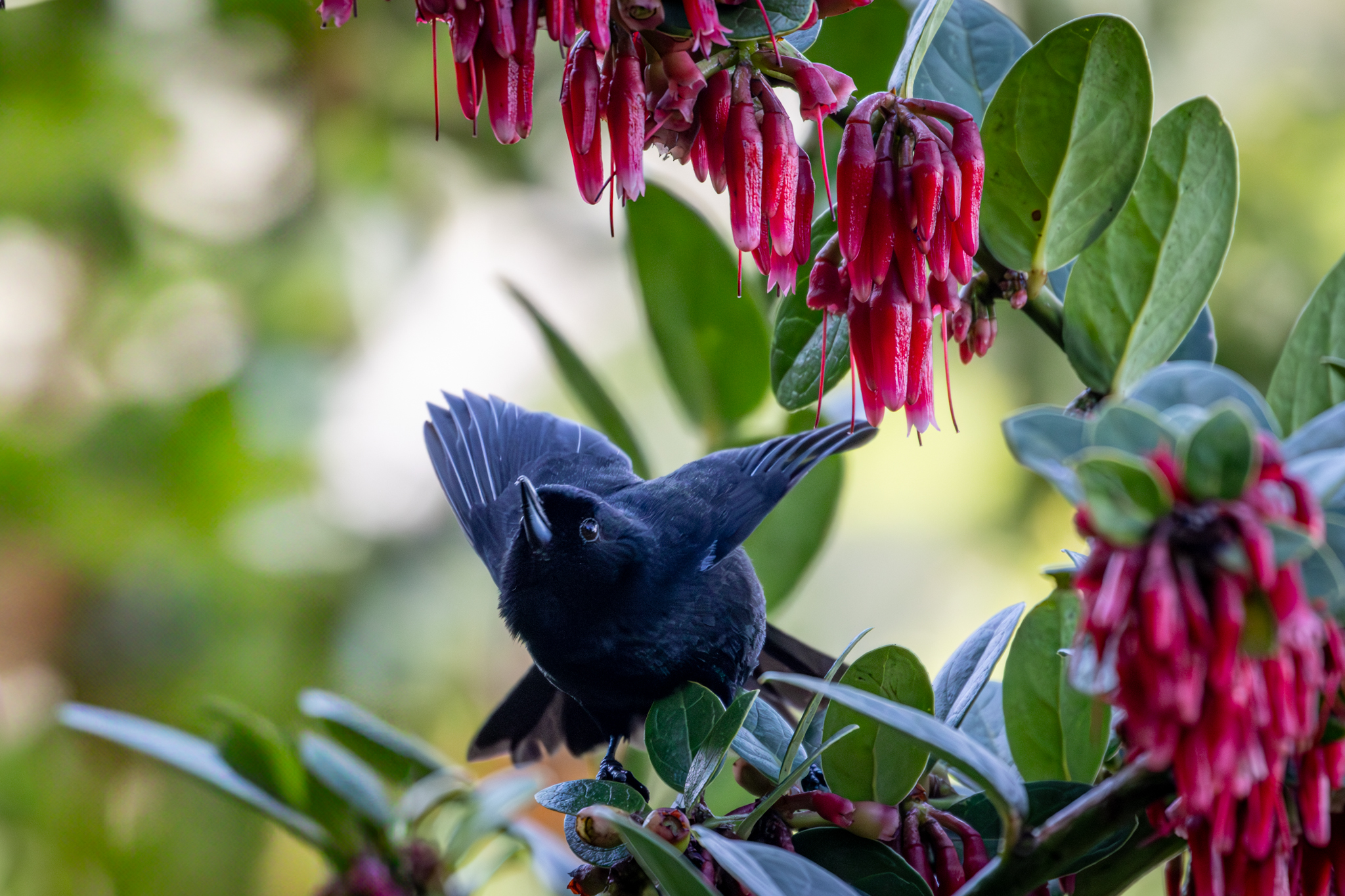
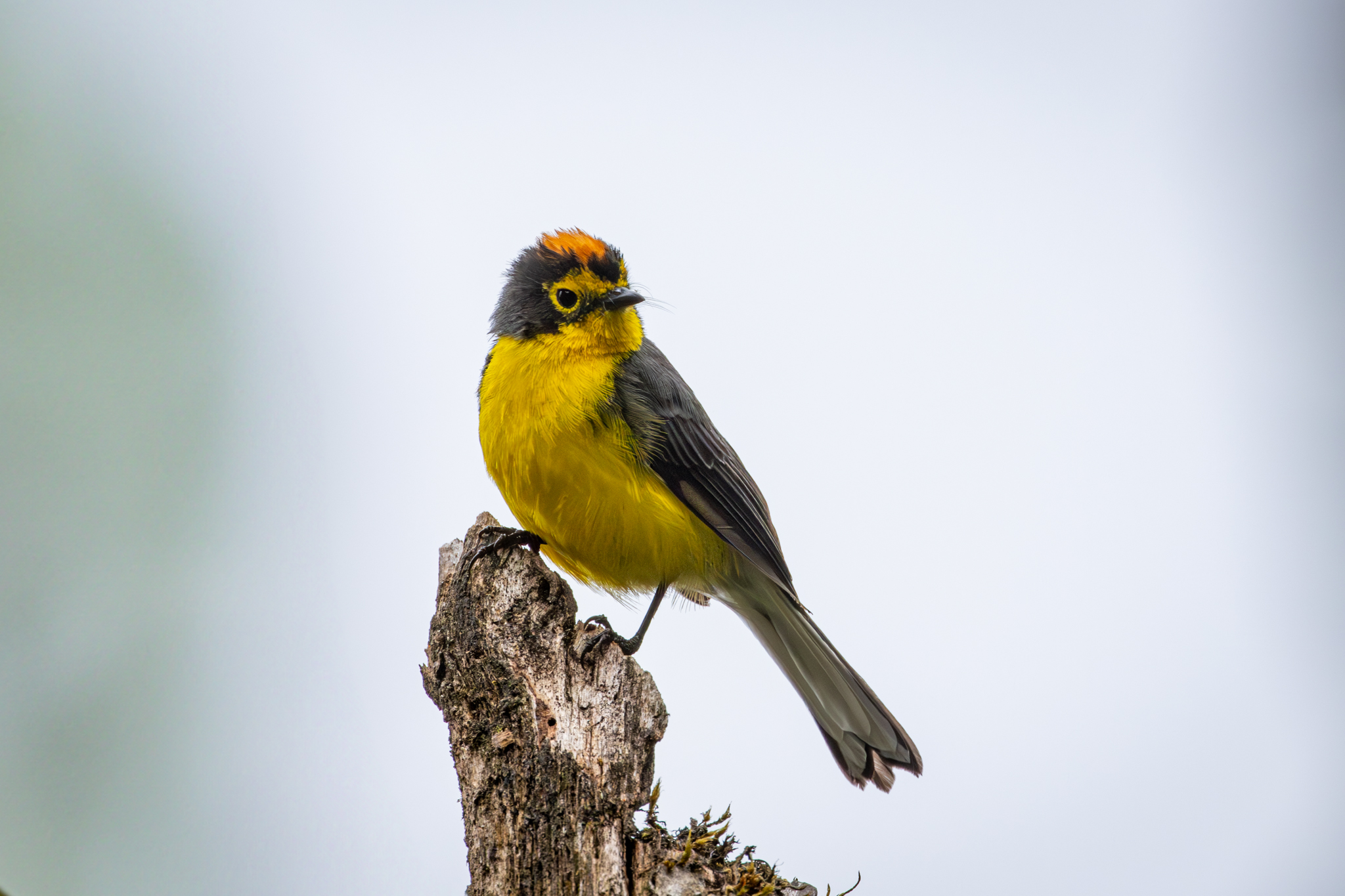
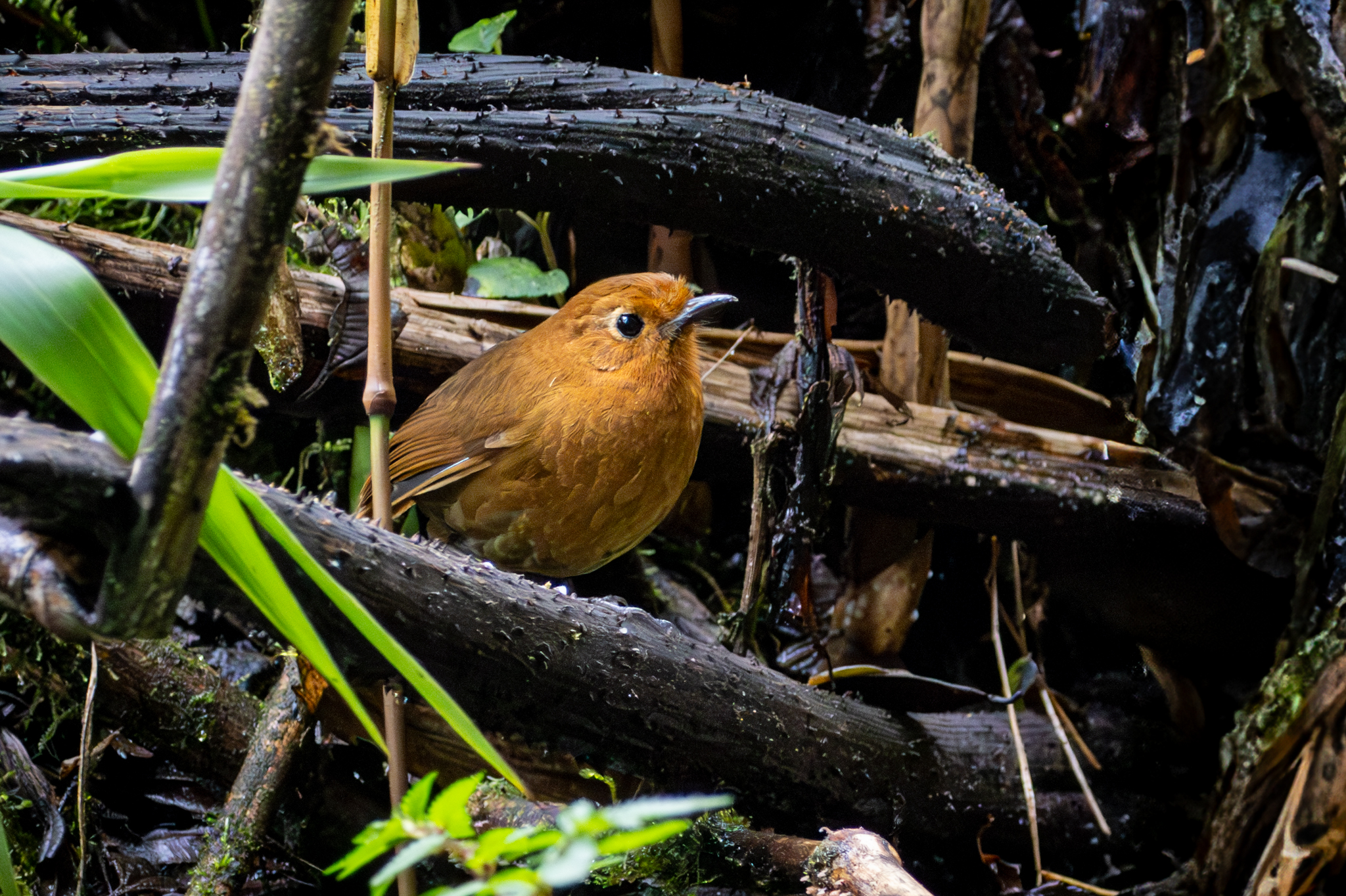
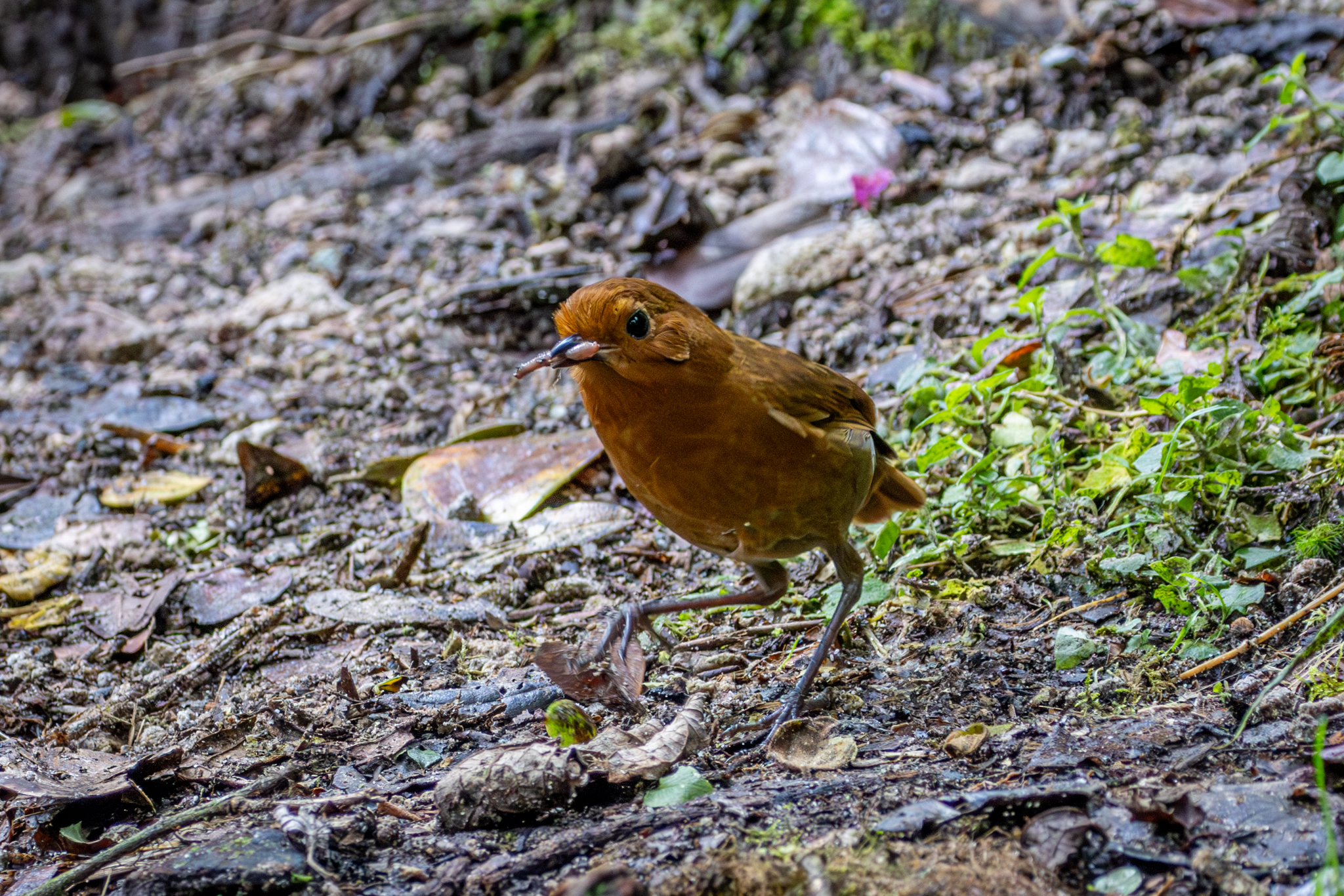
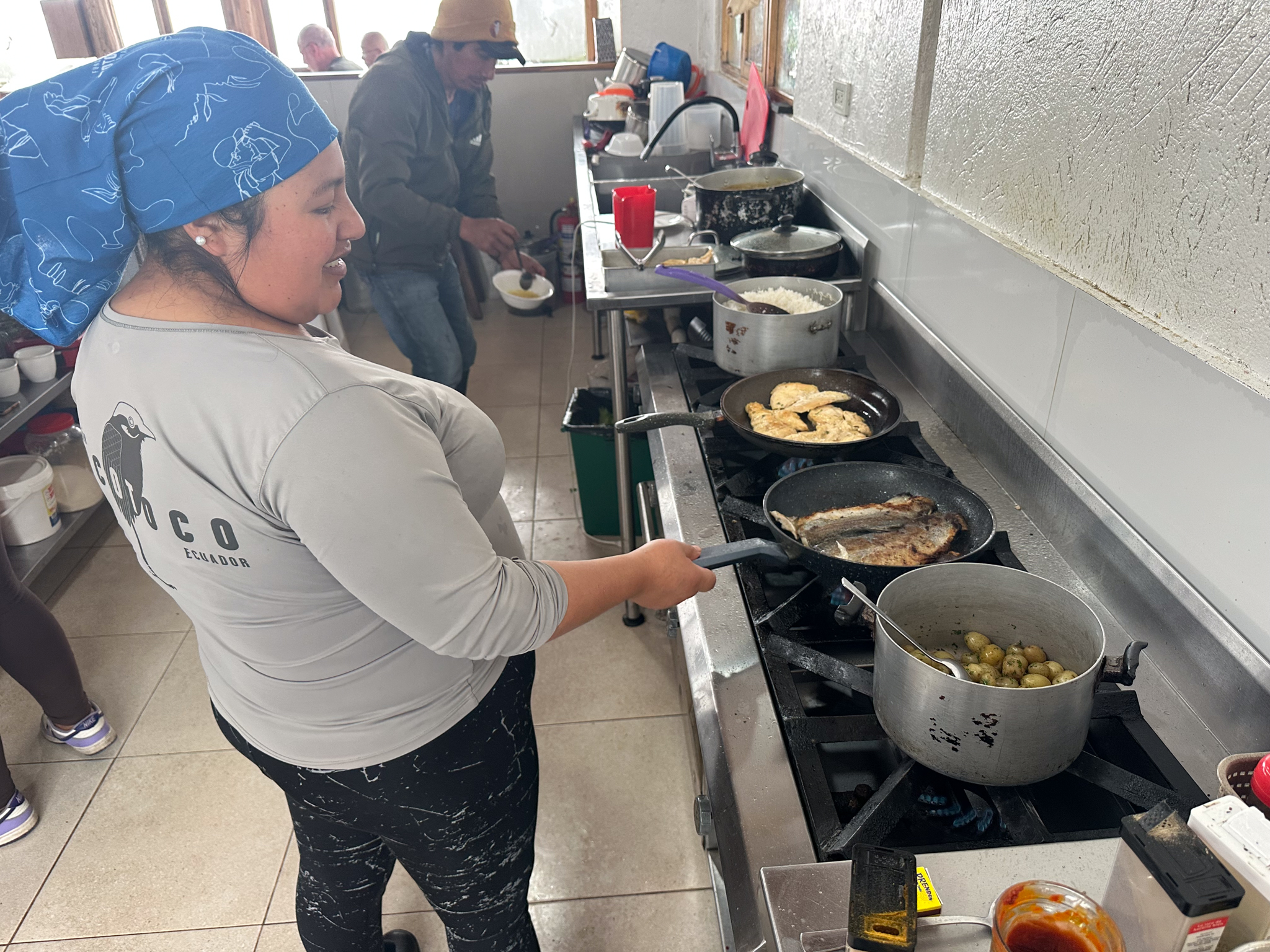
What an experience you kids are having! Love the pictures.